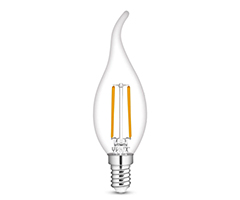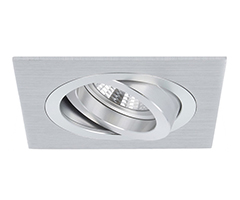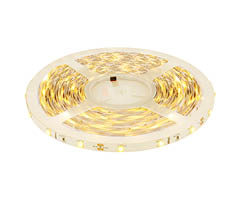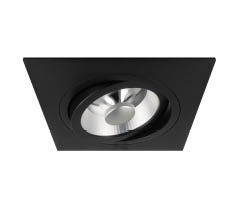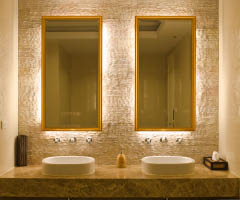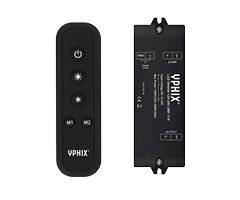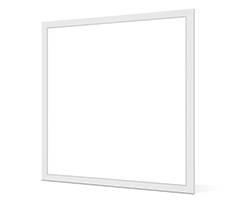Frequently asked questions about LED lighting.
Below, we have listed the most frequently asked questions about LED lighting. Is your question not included? Then please feel free to get in touch with us.
WHAT IS LED?.
An LED is an electronic component, a semiconductor component, which emits light when an electronic current is passed through it. The word "LED" was originally an abbreviation for Light Emitting Diode.
In the mid-1920s, Russian scientist Oleg Losev discovered that diodes emitted light when a current was passed through them. In 1927, he published details of the first LED in a Russian magazine and applied for a patent. Losev's work, however, went unnoticed. It was therefore not until 1962 that LED really broke through. In that year, Nick Holonvak developed a working LED.
WHAT ARE THE ADVANTAGES OF LED?.
The big advantage of LED is of course its very low energy consumption, in many cases only 10% of a comparable incandescent, halogen or tube light. Of course, the long lifetime is also a big advantage over conventional lighting. The durability of LED is not only due to the high number of burning hours, but also because LED is vibration- and shock-resistant. What is also striking about LED:
- No warm-up time, but full light immediately
- More than 1,000,000 circuits are possible without breaking down
- There are no ultraviolet or infrared rays
HOW DOES LED LIGHTING WORK?.
LED is an abbreviation for Light Emitting Diode. A diode is an electronic component that conducts electricity. An LED is therefore a light emitting diode. An LED works as follows: the LED consists of a positive and a negative side. The positive side has extra positively charged particles and the negative side has extra negative electrons. These come into contact with each other as soon as current flows through the diode. The moment the positive electron and the negative electron come into contact, energy is released in the form of photons. Light consists of photons, which is why the LED emits light.
Now that you understand how an LED works, the question is how an LED light works. First of all, it is important that the LED is powered with the correct current. That is where the driver does its work. A driver is the electronic part behind the LED(s) that ensures that the right amount of current reaches the LED. It then depends on the type of driver whether the LED light is dimmable or not.
Finally, there is one other component that helps to make an LED an LED light. This is the possible lens or reflector. LEDs themselves emit a wide beam of light. A lens or reflector can reduce the angle of light. Not all LED lights have a lens. For example, there are also spotlights with a wide beam, in which a (diffuse) glass is used instead of a lens.
Glass or plastic is also used around the LEDs in other LED lights such as tube lights and light replacements. Depending on the type of light, this can be transparent or diffuse. By correctly combining the above factors, it is also possible to make LED lights watertight. This means that we also sell LED lights that can be placed in damp rooms or outdoors.
WHAT FORMS OF LED ARE THERE?.
There are various forms of LED(s). The differences are mainly in the way they are mounted. The different forms are:
- SMD (Surface Mounted Device): 1 or more LEDs are soldered to a PCB.
- COB (Chip On Board): Here, several small LEDs are placed on one chip. This produces a high light output from a single point. With a COB, one large layer of phosphor is placed over all the LEDs, creating one large SMD.
- COG (Chip On Glass): This is a technology where the LEDs are mounted on glass. This technique is used for filament lights (light replacements).
- COC (Chip On Ceramic): This is a technique in which the LEDs are mounted on ceramic.
WHAT DO THE SOCKETS MEAN?.
GU10, MR16 (GU5.3), MR11 (GU4), E27, E14, PAR20, PAR30: these are all standard type designations for connections between light and socket. You can search on our site in the menu for the type of socket you want to replace with LED.
If you are not sure what type of light you need, please refer to the manual. Check whether there is a type designation on the socket or on the inside of the light.
WHAT COLOUR IS LED LIGHTING?.
LED lighting is often associated with white light. Nowadays, however, it is no longer the case that LED light is only white. This is because LED lighting is just as warm and atmospheric as traditional lighting. You can tell what colour the LED light is by the number of Kelvin. This information can be found in the product specifications. The higher the number of Kelvin, the whiter the light. The colour with a high number of Kelvin is comparable to the colour of daylight. The lower the number, the warmer the light will be. Think, for example, of the colour of candlelight.
HOW TO MAKE THE RIGHT CHOICE IN LED LIGHTING?.
In order to achieve ideal lighting in the home, developing a lighting plan is helpful. Light has various purposes and in various, often multifunctional, rooms it is important to pay sufficient attention to lighting. It is therefore important to distinguish between four different types of lighting. It is therefore important to distinguish between four different types of lighting.
General illumination/base lighting
This type of lighting ensures that sufficient light enters the room and illuminates it evenly and diffusely. This corresponds most closely to daylight, which calms the eyes and causes as little shadow as possible. Uplighters are lights that shine to the ceiling. The indirect light and the reflection on the ceiling make for a more diffusely lit room. Another example of this type of lighting is ceiling-mounted fixtures. A ceiling light is a light that can be attached to the ceiling or the wall without seeing any mounting screws. This type can be used in any kind of room.
Work lighting/functional lighting
This is directional light that is seen as a supplement to basic lighting. For example, a reading light next to your bed or some spotlights above the kitchen sink. This type of lighting is used at different times of the day, so it is practical when these lights are dimmable. It is important that there is no possibility of looking into the (bright) light source and that there are no shadows on the worktop. In a place like the kitchen sink, for example, you need to be able to see what you are doing and shadow is not helpful.
Accent lighting
Accent lighting is used to highlight a particular object or place and draw attention to it in order to make colours stand out better. Think, for example, of illuminating a painting or sculpture. The most frequently used fixtures for accent lighting are spotlights. Spotlights can be recessed, surface-mounted or attached to a track. If spotlights are mounted on a track or if you use a recessed or surface-mounted downlight, the direction of the light beam can be adjusted manually.
Decorative lighting/atmospheric lighting
The aesthetics of the fixture are paramount. This type of lighting is no longer about illuminating the room, but about the appearance of the light and the atmosphere it conveys. Many of these lights have a lower light output and are seen as the eye-catchers of the room.
WHICH LED LIGHTS DO YOU NEED?.
To choose the right LED light for your needs, it is advisable to draw up a lighting plan. A lighting plan is developed to clearly map out which lighting and the associated connection points you need for each room. Of course, the type of light is different in your kitchen, for example, than in your living room.
It is good to think about different types of LED light in a room. Take, for example, the basic lighting in the form of a ceiling light or LED panel. This is the 'big light' in a room. You can add accent lighting; this is a light that provides directional light. Think of a desk light, for example. Ambient lighting is used to add extra atmosphere to a room. An example of this is an LED strip light in the bookcase. Finally, it is still possible to install smart lighting in your room. This light can be controlled with an app, remote control or voice control, for example. The different colours make this light practical as work lighting, but it can also serve as mood lighting.
LED TRANSFORMER OR HALOGEN TRANSFORMER?.
If you are going to replace your halogen spotlights with LED spotlights, it is important to consider the different 12V transformers which you should and should definitely not use with 12V LED. We distinguish between 3 types of 12V transformers:
- LED can be operated with the old-fashioned and so-called wound or ferromagnetic transformers, but these transformers must be loaded to a minimum. The transformer will only work properly if, for example, at least 20W (see your transformer) of lights are connected to it. Furthermore, these wound transformers often do not produce exactly 12V but, for example, 13V or 14V. This is very damaging to the LED, as it becomes much too hot due to the high voltage! You can immediately recognise these transformers by their weight; they are heavy. Another disadvantage is that these transformers can hum and that the standby consumption is high.
- The electronic transformer: This transformer is much lighter and smaller than a wound transformer and is usually not suitable for LED lights or LED lighting, as they have a minimum load that is too high after replacing your halogen lighting with LED. This minimum load is indicated on your transformer. An electronic transformer can be recognised by the following symbol:
Electronic transformer - sign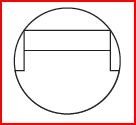
- The LED transformer (also called stabilised transformer): these transformers are of course perfectly suited to LED lights and lighting. These have the great advantage that no minimum load is required and, at least as important, the standby consumption is very low.
Conclusion: a wound transformer can be used if the voltage is exactly 12V, an electronic transformer is usually not suitable for LED.
Our advice: use a genuine LED transformer, as this is best for your LED lights and LED lighting. Our LED transformers are all very competitively priced and are delivered quickly. You will earn back the extra expense for an LED transformer by the very low standby consumption!


